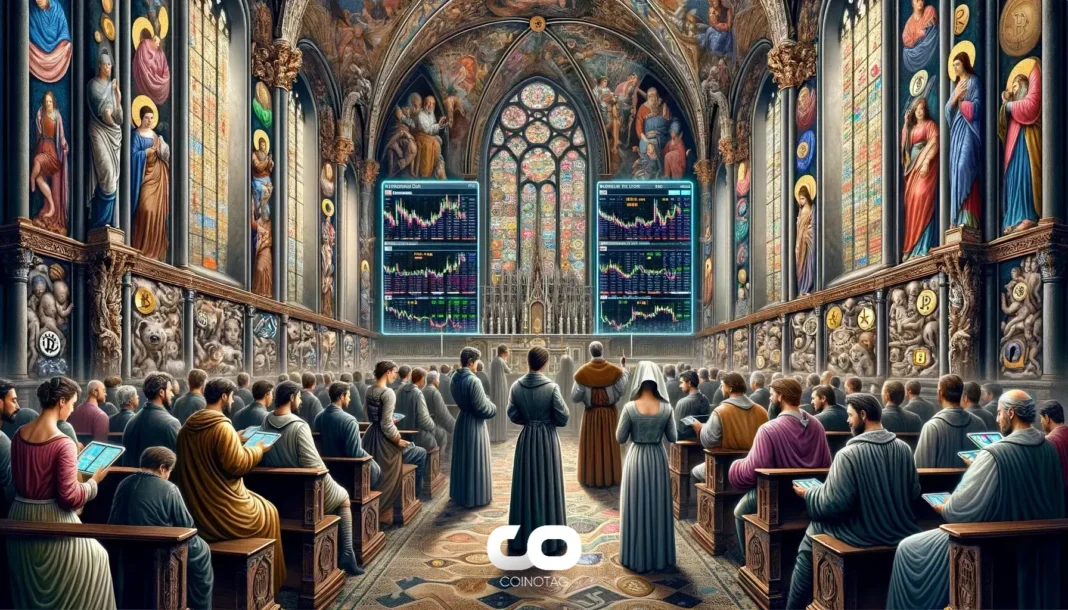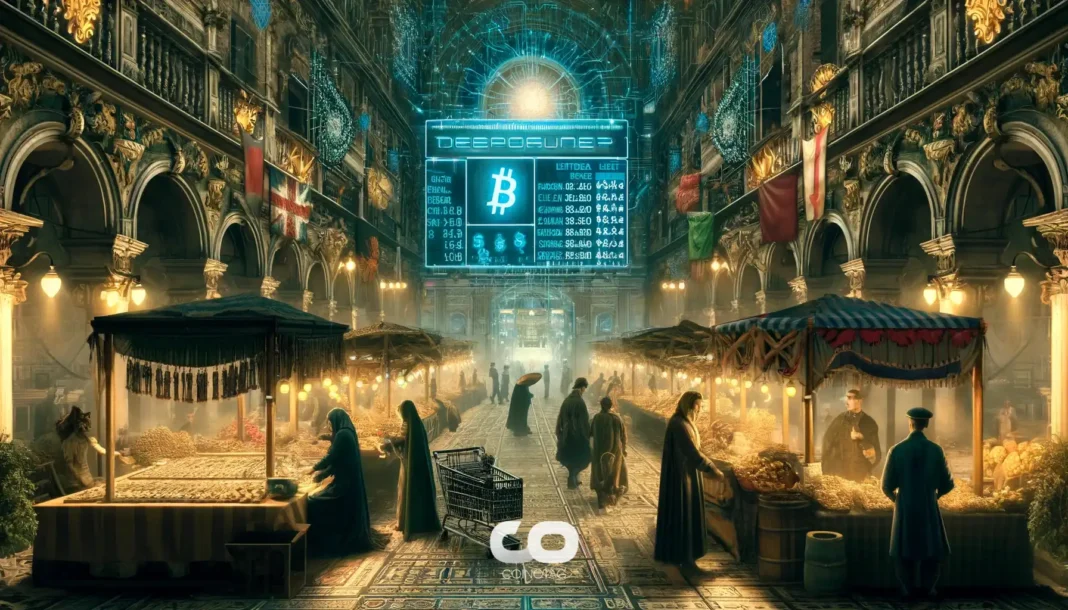| COINOTAG recommends • Exchange signup |
| 💹 Trade with pro tools |
| Fast execution, robust charts, clean risk controls. |
| 👉 Open account → |
| COINOTAG recommends • Exchange signup |
| 🚀 Smooth orders, clear control |
| Advanced order types and market depth in one view. |
| 👉 Create account → |
| COINOTAG recommends • Exchange signup |
| 📈 Clarity in volatile markets |
| Plan entries & exits, manage positions with discipline. |
| 👉 Sign up → |
| COINOTAG recommends • Exchange signup |
| ⚡ Speed, depth, reliability |
| Execute confidently when timing matters. |
| 👉 Open account → |
| COINOTAG recommends • Exchange signup |
| 🧭 A focused workflow for traders |
| Alerts, watchlists, and a repeatable process. |
| 👉 Get started → |
| COINOTAG recommends • Exchange signup |
| ✅ Data‑driven decisions |
| Focus on process—not noise. |
| 👉 Sign up → |
- Solana, alongside major cryptocurrencies like Ethereum and Bitcoin, faces considerable pressure at spot rates.
- Recent market dynamics since late May 2024 have emphasized the prevailing dominance of sellers, largely due to the plunge on June 6.
- However, some analysts remain optimistic about a potential recovery, especially for Solana, which could lead the market in the upcoming cycles.
Discover whether Solana’s uptrend will persist amidst current market pressures and what future prospects could mean for this top-5 cryptocurrency.
Will Solana’s Uptrend Tendencies Endure?
Despite the prevailing bearish conditions, there is a segment of market analysts who remain positive, predicting a promising recovery for altcoins and notably Solana. They believe that should bullish forces maintain the uptrend, effectively countering lower lows, Solana might ascend further.
An analyst on X highlighted that if the current upward trajectory continues and bulls rebuff any declines, SOL could maintain its upward momentum. Since mid-2023, Solana has impressed, ascending from relative obscurity to notably outperform Bitcoin. Data shows SOL has surged over 100% from its January 2023 lows and is approximately eight times higher than its September 2023 troughs.
Despite cooling off from its March 2024 peak of $210, Solana’s bullish tendencies remain. While the cryptocurrency is currently down 25% from its March high, bulls are striving to maintain support above $160 amid heightened selling pressure from the June 6 dip.
| COINOTAG recommends • Professional traders group |
| 💎 Join a professional trading community |
| Work with senior traders, research‑backed setups, and risk‑first frameworks. |
| 👉 Join the group → |
| COINOTAG recommends • Professional traders group |
| 📊 Transparent performance, real process |
| Spot strategies with documented months of triple‑digit runs during strong trends; futures plans use defined R:R and sizing. |
| 👉 Get access → |
| COINOTAG recommends • Professional traders group |
| 🧭 Research → Plan → Execute |
| Daily levels, watchlists, and post‑trade reviews to build consistency. |
| 👉 Join now → |
| COINOTAG recommends • Professional traders group |
| 🛡️ Risk comes first |
| Sizing methods, invalidation rules, and R‑multiples baked into every plan. |
| 👉 Start today → |
| COINOTAG recommends • Professional traders group |
| 🧠 Learn the “why” behind each trade |
| Live breakdowns, playbooks, and framework‑first education. |
| 👉 Join the group → |
| COINOTAG recommends • Professional traders group |
| 🚀 Insider • APEX • INNER CIRCLE |
| Choose the depth you need—tools, coaching, and member rooms. |
| 👉 Explore tiers → |
Technical Indicators and Bullish Sentiments
Technical analysis continues to bolster bullish perspectives, with candlestick formations on the daily chart suggesting potential upward movement. Moreover, Solana’s fundamentals offer promising signs that could sustain its current trend.
Solana’s Growing Institutional Adoption and Regulatory Hurdles
Solana’s adoption by leading financial institutions underscores its potential. Innovators like PayPal, Visa, and Stripe have begun to integrate Solana to enhance their offerings and embrace shifting user preferences favoring cost-effective and swift transactions. Solana’s capability to process up to 65,000 transactions per second (TPS) starkly contrasts with Ethereum’s mere 15 TPS, highlighting its superior scalability and lower transaction fees.
| COINOTAG recommends • Exchange signup |
| 📈 Clear interface, precise orders |
| Sharp entries & exits with actionable alerts. |
| 👉 Create free account → |
| COINOTAG recommends • Exchange signup |
| 🧠 Smarter tools. Better decisions. |
| Depth analytics and risk features in one view. |
| 👉 Sign up → |
| COINOTAG recommends • Exchange signup |
| 🎯 Take control of entries & exits |
| Set alerts, define stops, execute consistently. |
| 👉 Open account → |
| COINOTAG recommends • Exchange signup |
| 🛠️ From idea to execution |
| Turn setups into plans with practical order types. |
| 👉 Join now → |
| COINOTAG recommends • Exchange signup |
| 📋 Trade your plan |
| Watchlists and routing that support focus. |
| 👉 Get started → |
| COINOTAG recommends • Exchange signup |
| 📊 Precision without the noise |
| Data‑first workflows for active traders. |
| 👉 Sign up → |
The expansive demand for efficient transaction processing has driven institutions and developers, including those deploying meme coins, towards Solana. Nevertheless, regulatory challenges persist, with the United States Securities and Exchange Commission (SEC) lodging lawsuits against major exchanges like Binance and Coinbase. The SEC’s assertion that Solana represents an unregistered security introduces further uncertainty.
Solana and the Absence of a Developed Futures Market
Unlike Bitcoin and Ethereum, Solana lacks a robust futures market. This shortfall is significant when considering the SEC’s criteria for approving exchange-traded funds (ETFs), potentially delaying the introduction of such investment products for years. While Solana is listed on the CME market, it doesn’t benefit from the extensive futures trading that its peers do.
| COINOTAG recommends • Traders club |
| ⚡ Futures with discipline |
| Defined R:R, pre‑set invalidation, execution checklists. |
| 👉 Join the club → |
| COINOTAG recommends • Traders club |
| 🎯 Spot strategies that compound |
| Momentum & accumulation frameworks managed with clear risk. |
| 👉 Get access → |
| COINOTAG recommends • Traders club |
| 🏛️ APEX tier for serious traders |
| Deep dives, analyst Q&A, and accountability sprints. |
| 👉 Explore APEX → |
| COINOTAG recommends • Traders club |
| 📈 Real‑time market structure |
| Key levels, liquidity zones, and actionable context. |
| 👉 Join now → |
| COINOTAG recommends • Traders club |
| 🔔 Smart alerts, not noise |
| Context‑rich notifications tied to plans and risk—never hype. |
| 👉 Get access → |
| COINOTAG recommends • Traders club |
| 🤝 Peer review & coaching |
| Hands‑on feedback that sharpens execution and risk control. |
| 👉 Join the club → |
Conclusion
In summary, while Solana faces several headwinds, both from market pressures and regulatory challenges, its technical outlook and growing institutional adoption offer a beacon of hope. Market enthusiasts and analysts will be watching closely to see if Solana can sustain its uptrend and emerge as a leader in the evolving cryptocurrency landscape. Investors and stakeholders should keep an eye on these developments to align their strategies with future market trends.
| COINOTAG recommends • Members‑only research |
| 📌 Curated setups, clearly explained |
| Entry, invalidation, targets, and R:R defined before execution. |
| 👉 Get access → |
| COINOTAG recommends • Members‑only research |
| 🧠 Data‑led decision making |
| Technical + flow + context synthesized into actionable plans. |
| 👉 Join now → |
| COINOTAG recommends • Members‑only research |
| 🧱 Consistency over hype |
| Repeatable rules, realistic expectations, and a calmer mindset. |
| 👉 Get access → |
| COINOTAG recommends • Members‑only research |
| 🕒 Patience is an edge |
| Wait for confirmation and manage risk with checklists. |
| 👉 Join now → |
| COINOTAG recommends • Members‑only research |
| 💼 Professional mentorship |
| Guidance from seasoned traders and structured feedback loops. |
| 👉 Get access → |
| COINOTAG recommends • Members‑only research |
| 🧮 Track • Review • Improve |
| Documented PnL tracking and post‑mortems to accelerate learning. |
| 👉 Join now → |







